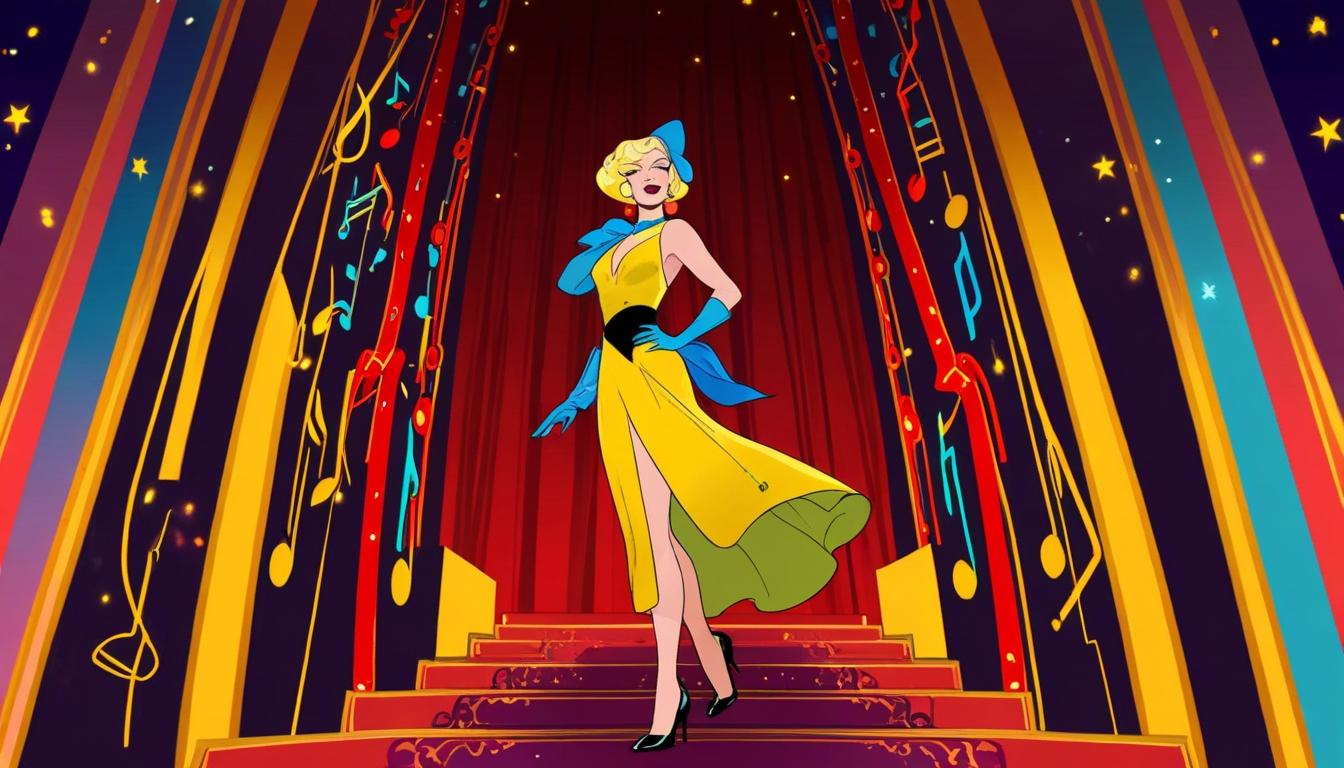Lacoste, established in 1933 by tennis champion René Lacoste and André Gillier, has become a leading name in fashion. Known for its iconic crocodile logo, the brand transformed sportswear by introducing the first branded tennis polo crafted from petit piqué cotton. Over the decades, Lacoste has expanded its footprint worldwide, embracing vibrant colors and innovating across apparel and accessories. The brand's heritage beautifully intertwines sport and fashion, rendering it a symbol of elegance and comfort. While recent years have brought challenges regarding sustainability and ethical practices, Lacoste's identity as a cultural icon endures. Discover how these elements converge to shape Lacoste's legacy in the realms of both sports and high fashion today.
Early Beginnings

In the early 1930s, a revolutionary idea took shape in the world of sportswear when Renée Lacoste and André Gillier joined forces to create Lacoste. This brand emerged from Lacoste's deep connection to tennis, as he was a celebrated tennis player with seven Grand Slam titles. His tenacity on the court earned him the nickname "The Crocodile," a moniker that would later inspire the iconic crocodile logo that defines the brand today.
Lacoste's innovative spirit led to the introduction of the first branded tennis shirt in 1933—the lightweight polo shirt made from petit piqué cotton. This marked a departure from the heavy, uncomfortable attire prevalent in tennis at the time, revolutionizing how athletes approached their sport. The polo shirt combined functionality with style, aligning with the ethos of French fashion that emphasized elegance and comfort.
Renée Lacoste's values of excellence, humility, passion, and fair play were woven into the fabric of the brand, creating a lasting legacy. Lacoste not only transformed tennis apparel but also set a precedent for future sportswear brands, making an indelible mark on both sports and fashion history.
Personal Life of René Lacoste
Marrying golf champion Simone Thion de la Chaume in 1930, Renée Lacoste not only united with a formidable athlete but also aligned with a partner who challenged gender norms in sports. Their relationship was a reflection of their personal values—excellence, humility, and sportsmanship—qualities that defined both their lives and the Lacoste brand.
The couple's dedication to integrity and fair play influenced not just their personal lives but also left a lasting family legacy. Their daughter, Catherine Lacoste, continued this tradition, becoming a world team golf champion in 1967, further cementing the family's commitment to athletic achievement.
Here's a glimpse into the personal life of Renée Lacoste:
| Aspect | Details | Impact on Lacoste Brand |
|---|---|---|
| Marriage | United with Simone Thion de la Chaume | Challenged gender norms in sports |
| Values | Excellence, humility, sportsmanship | Foundation of brand ethos |
| Family Legacy | Catherine Lacoste, world champion golfer | Continuation of sporting tradition |
| Personal Integrity | Commitment to fair play | Influences brand's reputation |
| Influence on Sports | Advocated for equality in athletics | Shapes brand's identity |
Renée Lacoste's life is a rich tapestry of sporting excellence and personal values that resonate through generations.
Innovations in Sportswear

While many brands have sought to define athletic apparel, Lacoste emerged as a pioneer by seamlessly blending functionality with style. Founded by tennis player René Lacoste, the brand introduced the first branded tennis shirt in 1933, marking an important shift in sportswear. This innovation not only enhanced comfort for athletes but also laid the foundation for modern athletic apparel.
Lacoste's lightweight polo shirts, crafted from petit piqué cotton, were tailored specifically for tennis players, elevating their performance on the court. The brand didn't stop there; in the 1950s, it revolutionized the tennis world by expanding its product line to include colorful Lacoste shirts, breaking away from the traditional all-white attire and popularizing vibrant sportswear.
In addition to apparel, Lacoste made impactful strides in tennis equipment, patenting the first tubular steel tennis racquet in 1963. This revolutionary tennis racquet, marketed as the Wilson T-2000, greatly boosted racquet sales and showcased the brand's commitment to innovation. Moreover, Lacoste introduced a patented shock absorber for rackets in 1960, highlighting its dedication to enhancing athletic performance through technological advancements.
Global Expansion
Lacoste's global expansion has been marked by strategic decisions that greatly increased its market presence and brand visibility. Starting in the 1950s, Lacoste began exporting clothing worldwide, which not only broadened its reach but also introduced a children's line, appealing to families. By 2005, Lacoste had sold nearly 50 million products across over 110 countries, a proof of its successful penetration into various markets.
The brand's sports sponsorship, particularly as the official sponsor of Roland-Garros since 1971, notably enhanced its visibility within the French tennis scene and beyond. This connection to sports has positioned Lacoste as a lifestyle brand closely associated with athleticism and elegance.
Key elements contributing to Lacoste's global expansion include:
- The iconic Crocodile logo that symbolizes quality and style
- The strategic opening of a flagship store on the Champs-Élysées in May 2023
- Partnerships with athletes who serve as brand ambassadors
- Collaborations with popular culture, like the 2022 Lacoste x Minecraft line
- A commitment to reaching younger demographics with innovative products
Through these initiatives, Lacoste has solidified its status as a prominent international brand.
Recent Developments

Building on the brand's successful global expansion, recent developments have further solidified Lacoste's position in the market. The establishment of the Lacoste Foundation in 2006 underscores the brand's commitment to social responsibility, promoting the integration of underprivileged youth through sports and education. This initiative aligns with Lacoste's heritage and core values, a focus that was amplified following its acquisition by Maus Frères SA in 2012.
With Louise Trotter as Creative Director since 2018, Lacoste has experienced a revitalization of its collections, blending modern aesthetics with the brand's rich legacy. The appointment of tennis star Novak Djokovic as a brand ambassador in 2017 exemplifies Lacoste's dedication to excellence in sportsmanship. Following Djokovic, Daniil Medvedev's recognition as a brand ambassador in 2019 further cements the brand's connection to top tennis talent.
| Year | Development |
|---|---|
| 2006 | Established Lacoste Foundation |
| 2012 | Acquired by Maus Frères SA |
| 2017 | Novak Djokovic as brand ambassador |
| 2018 | Louise Trotter named Creative Director |
These strategic moves guarantee Lacoste remains relevant and influential within both fashion and sports industries.
Controversies and Challenges
The world of fashion isn't without its controversies, and Lacoste has faced its share of challenges that have raised questions about its corporate ethics. Accusations of environmental negligence surfaced after Greenpeace's 2011 "Dirty Laundry" report linked Lacoste's suppliers in China to significant river pollution. This revelation highlighted the brand's struggles with sustainability and ethical practices.
Moreover, Lacoste faced backlash when it withdrew sponsorship from the Musée de l'Élysée due to censorship claims involving Palestinian artist Larissa Sansour's work. The media scrutiny surrounding this decision put further strain on its public image. Additionally, the Australian Strategic Policy Institute accused Lacoste of ties to forced Uyghur labor, prompting the company to commit to halting all supplier activities in Xinjiang by July 2020.
These issues contribute to a growing discourse on corporate ethics in the fashion industry, affecting how consumers perceive Lacoste. Consider the implications of these controversies:
- Environmental degradation
- Compromised sustainability
- Ethical dilemmas in labor practices
- Impact on artists' freedom
- Erosion of brand trust
Understanding these elements can help you navigate Lacoste's complex landscape.
Legacy and Brand Identity

At the intersection of sport and fashion lies a brand that has masterfully crafted its identity over the decades. Lacoste, founded in 1933 by tennis champion Renée Lacoste and André Gillier, established a legacy rooted in athletic excellence and elegance. The iconic crocodile logo, which emerged from Lacoste's nickname, was the first visible logo on a polo shirt and has become a symbol of casual sophistication worldwide.
Initially focused on tennis apparel, Lacoste revolutionized the polo shirt, marrying functionality with style. This innovation allowed the brand to evolve into an all-encompassing lifestyle label, now including various clothing lines, accessories, and fragrances. The brand name has become synonymous with quality and craftsmanship, bolstered by its commitment to eco-friendly materials that resonate with socially conscious consumers.
Lacoste's continued association with sports, particularly through sponsorships at prestigious events like Roland-Garros and collaborations with renowned tennis players, enhances its status as a symbol of athletic excellence. This careful interplay between sport and fashion has solidified Lacoste's identity, ensuring that it remains a beloved choice for those seeking both style and performance.
Frequently Asked Questions
What Is the Brief History of Lacoste?
Lacoste began in 1933, revolutionizing sportswear with its iconic tennis shirt. The brand's crocodile logo symbolizes tenacity, while its global expansion in the 1950s solidified its status as a preppy fashion staple.
Why Is the Lacoste Logo a Crocodile?
The Lacoste logo's a crocodile because it symbolizes tenacity and resilience. This emblem reflects the brand's commitment to athleticism and casual elegance, making it instantly recognizable and synonymous with both sport and fashion across the globe.
Why Is Lacoste so Famous?
Lacoste's fame stems from its innovative approach to sportswear, blending style and function. Its iconic crocodile logo, quality craftsmanship, and strategic collaborations have positioned it as a leading lifestyle brand, appealing to both athletes and fashion enthusiasts alike.
Who Is Lacoste Owned By?
Lacoste's currently owned by Maus Frères SA, a Swiss company that acquired it in 2012. This acquisition highlights the brand's commitment to preserving its heritage and maintaining its strong global presence in the lifestyle market.




Thanks for sharing. I read many of your blog posts, cool, your blog is very good.